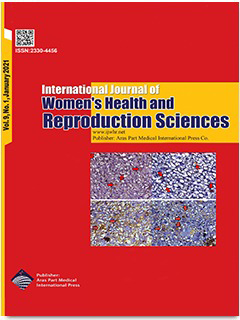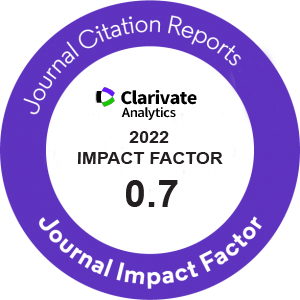| Original Article | |
| Prevalence and Genotype Distribution of Human Papillomavirus Among a Subpopulation of Jordanian Women | |
| Ashraf I. Khasawneh1, Fida F. Asali2, Rami M. Kilani2, Jumana A. Abu-Raideh1, Nisreen M. Himsawi1, Muna A. Salameh3, Ghadeer H. Al Ghabbiesh4, Tareq Saleh1 | |
| 1Department of Basic Medical Sciences, Faculty of Medicine, the Hashemite University, Zarqa, Jordan 2Department of Obstetrics and Gynecology, Faculty of Medicine, the Hashemite University, Zarqa, Jordan 3Department of Basic Medical Sciences, College of Medicine, Al-Balqa’ Applied University, Al-Salt, Jordan 4Molecular Biology Department, MedLabs Consultancy Group, Amman, Jordan |
|
|
IJWHR 2021; 9: 017-023 DOI: 10.15296/ijwhr.2021.04 Viewed : 2432 times Downloaded : 1805 times. Keywords : Human papillomavirus, Real-time PCR, HPV 16, Prevalence, Jordan, Cervical cancer |
|
| Full Text(PDF) | Related Articles | |
| Abstract | |
Objectives: Human papillomavirus (HPV) infection is the leading sexually-transmitted infection (STI) worldwide and the main etiology of cervical cancer. HPV infection rates are important in directing vaccination policies and screening for cervical cancer. Unfortunately, no recent reports have evaluated the prevalence of this infection among Jordanian women despite major globalization-driven changes in sexual behavior. Accordingly, this study aimed to determine the prevalence of HPV infection and its genotypic distribution in the cervical samples of Jordanian women. Materials and Methods: The study was carried out at Prince Hamza Hospital (Amman, Jordan) during 2016-2017. Women (15-75 years old) were randomly selected for cervical cell collection. DNA was extracted and then amplified using MY09/11 and GP5+/6+ consensus primers. Finally, positive samples were genotyped by applying real-time- polymerase chain reaction and reverse line blotting. Results: Fourteen out of 348 women tested positive for HPV with a prevalence rate of 4%. In addition, multiple HPV genotypes were observed in 36% (5/14) of infected women while single HPV genotype infection was found in 64% (9/14) of infected women. Further, high-risk (HR), potential high-risk (pHR), and low-risk (LR) HPV genotypes were detected in most cases with a 78.6% (11/14) infection rate, 42.9% (6/14), and 7.1% (1/14) of infected women, respectively. Eventually, 10 different genotypes were detected in infected women and HPV 16 was the most common type (42.9%, 6/14). Conclusions: Our data suggest that the prevalence of HPV infection among Jordanian women is below the global and regional rates. It is hoped that these data should facilitate the implementation of appropriate cervical cancer screening and future HPV vaccination programs. |
Cite By, Google Scholar
Google Scholar
PubMed
Online Submission System
 IJWHR ENDNOTE ® Style
IJWHR ENDNOTE ® Style
 Tutorials
Tutorials
 Publication Charge
Women's Reproductive Health Research Center
About Journal
Publication Charge
Women's Reproductive Health Research Center
About Journal
Aras Part Medical International Press Editor-in-Chief
Arash Khaki
Mertihan Kurdoglu Deputy Editor
Zafer Akan























